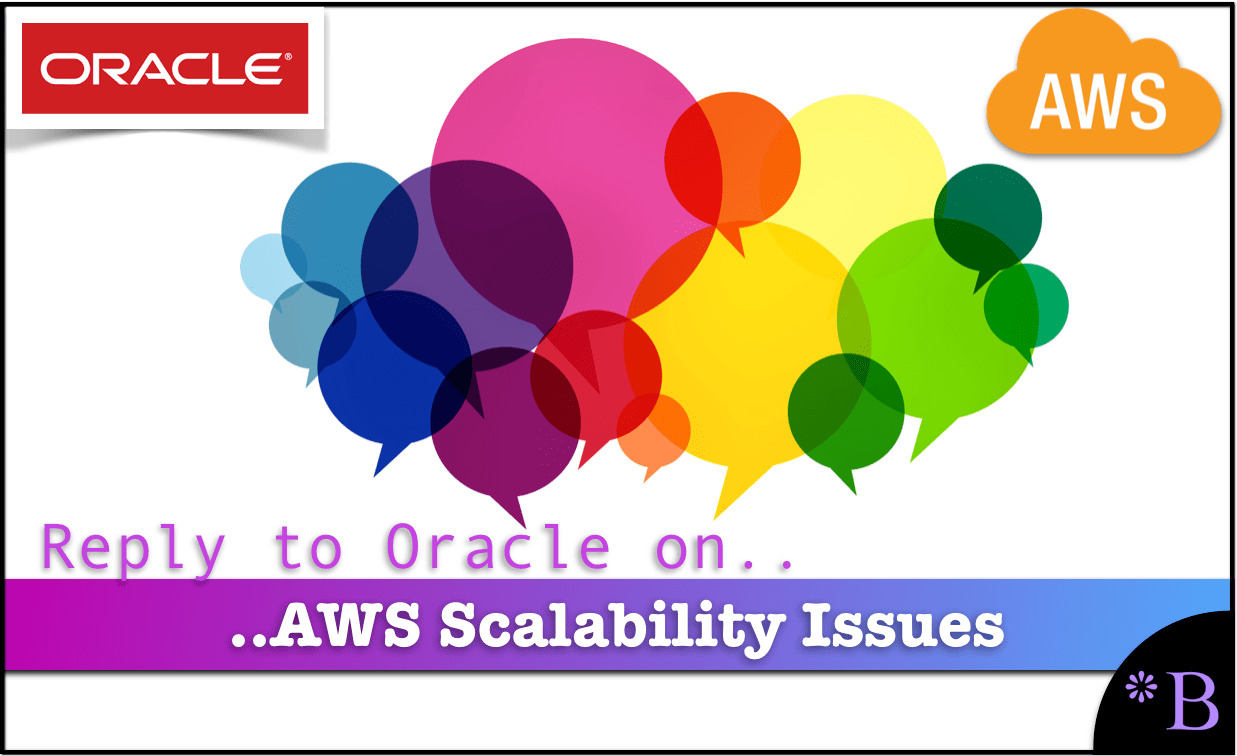How to Respond to Oracle’s Arguments that AWS Has a Problem with Scalability?
Executive Summary
- Oracle makes the argument that AWS has a problem with scalability.
- How valid is this argument against the cloud from Oracle?

Introduction
The next argument moves to the scalability argument.
Our References for This Article
If you want to see our references for this article and other related Brightwork articles, see this link.
Lack of Financial Bias Notice: The vast majority of content available on the Internet about Oracle is marketing fiddle-faddle published by Oracle, Oracle partners, or media entities paid by Oracle to run their marketing on the media website. Each one of these entities tries to hide its financial bias from readers. The article below is very different.
- This is published by a research entity, not some dishonest entity that is part of the Oracle ecosystem.
- Second, no one paid for this article to be written, and it is not pretending to inform you while being rigged to sell you software or consulting services. Unlike nearly every other article you will find from Google on this topic, it has had no input from any company's marketing or sales department. As you are reading this article, consider how rare this is. The vast majority of information on the Internet on Oracle is provided by Oracle, which is filled with false claims and sleazy consulting companies and SAP consultants who will tell any lie for personal benefit. Furthermore, Oracle pays off all IT analysts -- who have the same concern for accuracy as Oracle. Not one of these entities will disclose their pro-Oracle financial bias to their readers.
“And finally, what happens when your AWS Database workload seriously gets big, as in TB’s or PB’s? Can you move your AWS Database on-premise? No, they are public-cloud only. What if you have governance requirements for the Database and can’t run it on AWS as they don’t have a location that’s in-country? Well, don’t have an option their either. So again, you become locked-in to AWS and as we know, the Database is probably the worst of lock-ins and where it resides is probably second. So choosing the right Database and location is probably the biggest IT decision being made.”
After spending a lot of time analyzing Oracle’s arguments, This is a standard strategy by Oracle, which is to take one particular case study and to try to generalize from it and make it appear more significant than it is.
Public Cloud
Yes, AWS is offering a public cloud. Public cloud with security (as we covered in the VPC topic earlier in the book), but public cloud. Private cloud or hosting loses most of the advantages of the cloud. There is a great debate about how much more of an advantage a private cloud is from merely being on premise. Therefore, this does not hold interest for AWS. AWS is interested in businesses or sections of a business that can be scaled, and that is a public cloud. While Oracle is talking up its private cloud, AWS is building public cloud capabilities that it now appears that neither SAP nor Oracle, with all of their resources, cannot replicate.
Managed Scaled Multitenancy
The reason is not a lack of financial resources, but because neither SAP nor Oracle has to experience managing scaled multitenancy. Of course, as SAP and Oracle have ex-AWS and ex-Google Cloud employees, specific employees have that experience, but it was attained at other companies. The experience of SAP and Oracle is replicating the same items at hundreds of thousands of accounts. That is implementing applications and databases in a job shop manner on-premises but in hundreds of thousands of customers. Imagine factories where factory workers (i.e., the consultants) were trying to make the production process as expensive as possible. This would be a rough approximation of SAP and Oracle environments.
This is a primary reason why SAP and Oracle are so expensive. While both are large companies, they follow more of a job shop model than a mass production model. Everything from how software is sold to how it is installed is the same repeating model, inefficient.
As for Oracle’s assertions of cloud lock-in, is this really an argument Oracle should be making?